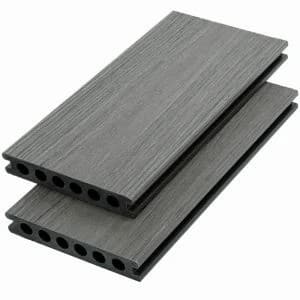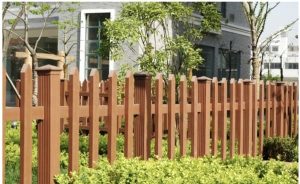Composite wood for decking, made from wood fiber and recyclable plastic still faces expansion and contraction, but less than wood because of its good moisture and weather resistance. Unifloor always offers you durable composite wood decking for outdoor decoration.
When selecting materials for a patio deck, we need to take into account the impact of surrounding environmental factors on the stability of the material. So, what factors contribute to the problem of material expansion and contraction? Do composite wood for decking expand and contract? To what extent? What do you need to be aware of? This article will answer that question for you.
Factors affecting expansion and contraction
Wooden boards
The main factor that causes boards to expand and contract is moisture in the air. In areas of high humidity, boards will absorb moisture and expand, and in dry climates, boards will shrink due to lack of moisture. If you live in an area where humidity does not fluctuate significantly throughout the year, then you do not have to worry too much about this problem.
Composite boards
Unlike wood decking, WPC board is highly water-resistant and has a very low water absorption rate. Even after a month of immersion in water, the best wood plastic composite decking will only absorb about 5% of the water. It can effectively stop water from entering the floor and causing swelling.
On the contrary, composite wood for decking may face expansion or contraction due to outside temperature changes. Wood-plastic composite decking expands at high temperatures and shrinks at low temperatures. Composite wood for decking will change slightly in length and width with temperature, but eventually, it can return to its original size and there is no need to worry about causing problems such as cracking.
What to pay attention to during installation
n view of this problem, in order to safely use wood-plastic composite decking, what needs to be paid attention to during the installation process?
1. Installation time: To avoid temperature changes affecting the cutting and installation of the decking, it is recommended to carry out installation work in the early morning.
2. Installation system: Choose decorative boards with grooves, which are equipped with a hidden installation system that does not require a lot of drilling and nailing on the surface of the floor. This can largely avoid the deformation of the floor and cause the nails to move up or pop out to cause damage to the deck or other safety hazards.
3. Installation spacing: Another important point is to leave proper spacing between each deck. Unifloor’s deck installation system is equipped with T-clips and screws for each deck, fixing the deck to avoid its left and right movement due to shape change. It also ensures that there is enough space between the decks to allow for expansion of the deck. If the spacing is too small, the expansion of the deck will cause the floor to wear out. In addition, the temperature of the area must be taken into account.
Installation temperature & gap required
Cold 0-10: 5-6mm at the end of boards
Warm 10-20: 3-4mm at the end of the boards
Hot 20-30: 2-3mm at the end of boards
Seasonal factors also need to be taken into account in order to find the right mounting pitch. You can contact us for professional advice. We look forward to helping you.
Co-extruded composite wood for decking
Unifloor capped composite wood decking owns good weather ability, it is suitable from -40°C to 60°C. And also dimensional stability against moisture and temperature. Extruded surface prevents UV and water molecules from decking, and avoids external forces and self-heating expansion and contraction to achieve anti-cracking and anti-fracture. Waterproofing makes it suitable for use around swimming pools. Unifloor, a specialized WPC deck manufacturer and supplier in China, come and choose composite wood for decking.








